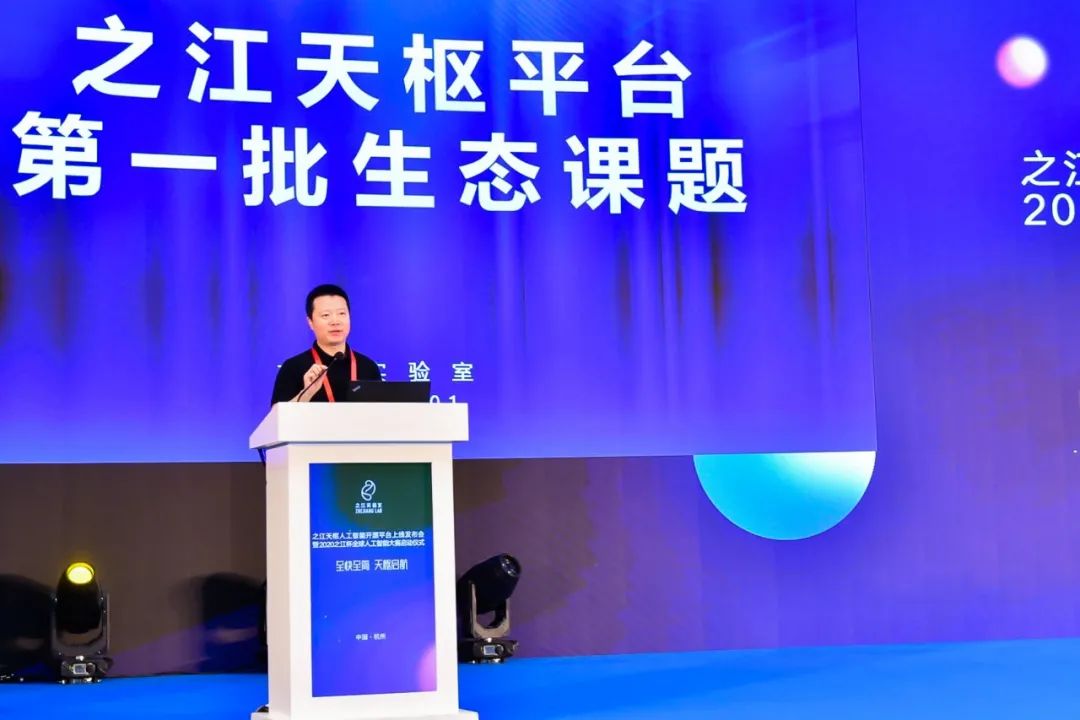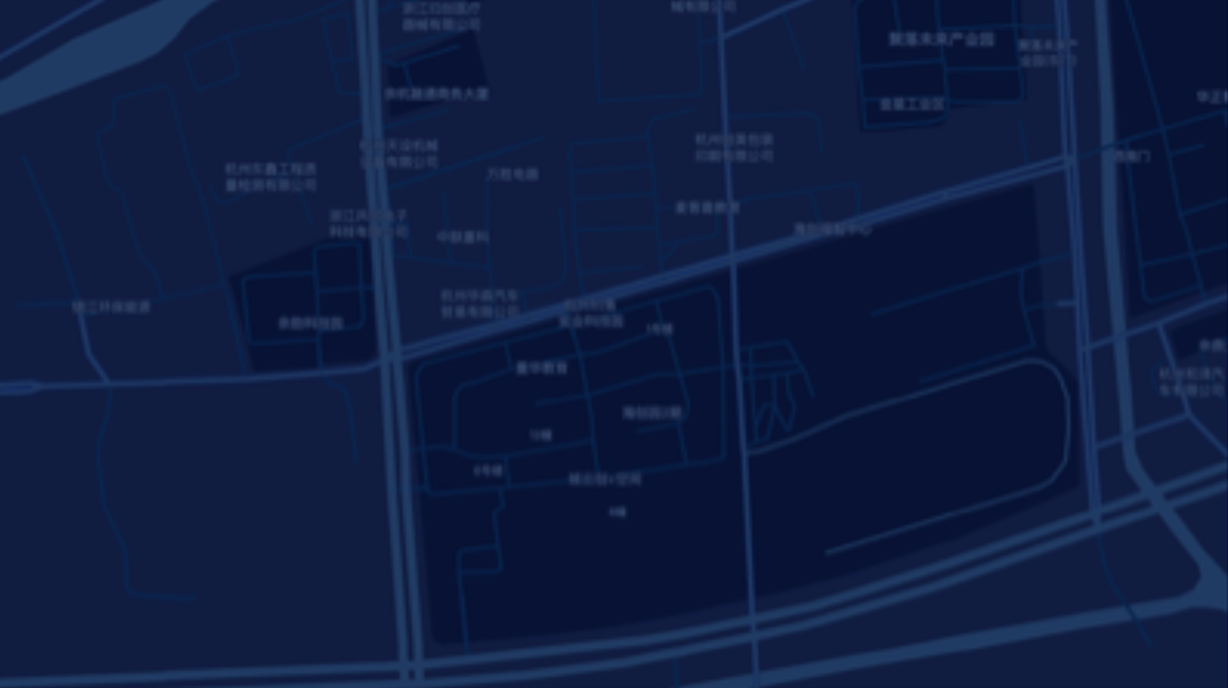


On August 1, at the conference for the launch of the Dubhe Artificial Intelligence Open Source Platform, Zhejiang Lab announced the topics for the first group of Dubhe open research projects, so as to muster academic and industrial efforts in order to create an open research environment and central ecosystem for AI technologies and applications.
"Focusing on six fields including smart cities, smart healthcare, intelligent robotics, intelligent vision, intelligent transportation, and intelligent finance, Zhejiang Lab has determined ten topics for the first group of Dubhe open research projects. We hope to gather research capabilities in different sectors to jointly promote the application of AI technologies in various industries and professions," said Zhao Zhifeng, Zhejiang Lab Director at the Department of Research Development.
Project 1: Automatic Compression of Pre-Trained Language Models for Multiple Tasks
Field: Smart Cities
Description: Use knowledge distillation to compress pre-trained language models and design a task-independent small model to learn the representation ability of a large model. Make the model adaptable to multiple tasks according to the correlation between different tasks, and fully leverage the compressed model architecture to improve compression efficiency. In addition, consider the possibility of using meta-learning in compression to obtain a general architecture for a certain category of tasks, and improve the model’s performance for such tasks via meta-learning. Learn from evolutionary neural networks to achieve knowledge transferability and model adaptability through single-objective or multi-objective optimization.
Project 2: 3D Dynamic Monitoring of Water Environments Based on Satellite Remote Sensing Images
Field: Smart Cities
Description: Based on multi-source and multi-spectral satellite remote sensing images, use deep-learning approaches to study inversion algorithms for eleven water quality parameters including chemical oxygen demand, five-day biochemical oxygen demand, and permanganate index. Based on the common spectral features of different polluted waterbodies, determine the identification index of black-odorous waterbodies, and build a judgement model to provide data support and approaches for the 3D dynamic monitoring and control of water environments.
Project 3: Image-based Medical Entity Recognition and Anomaly Early Warning Model
Field: Smart Healthcare
Description: Based on the needs of digitizing a large number of paper medical records in scenarios such as Internet diagnosis and medical insurance underwriting, explore OCR-based high-performance methods for medical entity recognition and anomaly early warning. The aim of the project is to outperform similar methods in terms of efficiency and accuracy for the recognition and detection of complex medical tests such as examinations, lab tests, and hospital discharge summaries, thereby significantly improving the efficacy of intelligent data acquisition in medical scenarios.
Project 4: Efficient Annotation of Medical Images Based on Knowledge Amalgamation
Field: Smart Healthcare
Description: Focus on medical image segmentation and accurate recognition to explore a method for the efficient annotation of medical images based on knowledge amalgamation. The method should be able to detect abnormal areas in medical images and provide relevant information for such judgements. The aim of the project is to outperform similar methods in terms of annotation accuracy and speed, helping users improve their image-reading efficiency and decision-making accuracy.
Project 5: Scenario Recognition Algorithms in Highly Dynamic Large-Scale Environments
Field: Intelligent Robots
Description: Explore accurate scenario recognition algorithms for robots in complex, changeable, and highly dynamic large-scale environments, reducing the impact of objects, illumination conditions, climate changes, and visual angles on recognition accuracy. Develop lightweight recognition algorithms to ensure algorithms’ deployability and real-time performance on embedded platforms.
Project 6: Human Movement Detection and Recognition Algorithms Based on Millimeter Wave Radars
Field: Intelligent Robots
Description: Explore machine vision algorithms for service robots based on millimeter wave radars. Achieve highly accurate differentiation between humans and non-human objects, as well as highly accurate detection and recognition of human movements. Develop lightweight machine learning algorithms to ensure algorithms’ deployability and real-time performance on embedded platforms.
Project 7: Recognition Algorithms for Outdoor Large FOV Group Actions
Field: Intelligent Vision
Description: Study algorithms for outdoor large FOV (field of view) group action recognition. Based on the features of group actions, explore the topological model between individual actions in a group and the correlations between the attributes of individual movements. Propose a new network model for group actions to extract common features of group actions. Develop end-to-end group action recognition models to explore direct representation patterns of different group actions.
Project 8: 24/7 Warning Model for Natural Fire Disasters Based on Intelligent UAV Monitoring
Field: Intelligent Vision
Description: Focusing on 24/7 fire warning, prevention, and control in natural environments, build a dataset of real-life fire disasters with data collected by unmanned aerial vehicles (UAVs). Study few-shot learning methods for smoke and flame recognition under cloudy, sunny, rainy, snowy, and foggy weather conditions. Establish time-series models for the evolution and prediction of fire disasters, and develop new network models for accurate smoke and flame positioning, to achieve real-time fire positioning and alarm systems in natural environments.
Project 9: Surveillance Video-based Detection and Recognition Model for Foreign Objects on the Road
Field: Intelligent Transportation
Description: Explore effective video-based recognition methods for various types and sizes of foreign objects existing randomly by location and time on the road. The method should be able to describe foreign objects’ types, sizes, locations, and degrees of hazard, helping road management agencies to clear the objects quickly and timely.
Project 10: NPL-based Synonym Recognition Algorithms for General Data Dictionaries
Field: Intelligent Finance
Description: To face problems caused by inconsistent terminology systems used by various databases at different banks and inconsistent business descriptions, employ natural language processing (NPL) technology to identify and categorize terminology synonyms across different databases through approaches such as word segmentation, part-of-speech recognition, and word vectors. The aim of the project is to support the establishment of a database terminology system, the integration of data from different business lines, systems, and statistical channels, and the construction of a complete and unified database for all banks.
Important Notes for the Application of Dubhe Open Projects
Amount of Grants: 400,000 – 600,000 CNY
Funding Period: 1 year
Deadline for Submission: September 30, 2020
Application Entry: the Zhejiang Lab Research Management System https://ky.zhejianglab.com
Application Materials: Application Form and PPT presentation videos
Announcement of Results: October 30, 2020
Chief Dubhe Ecosystem Officer: Wu Lijuan (Tel: 0571-56390655; Email: wulijuan@zhejianglab.com)











